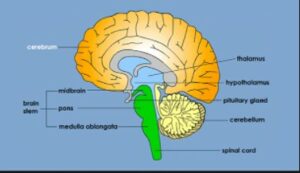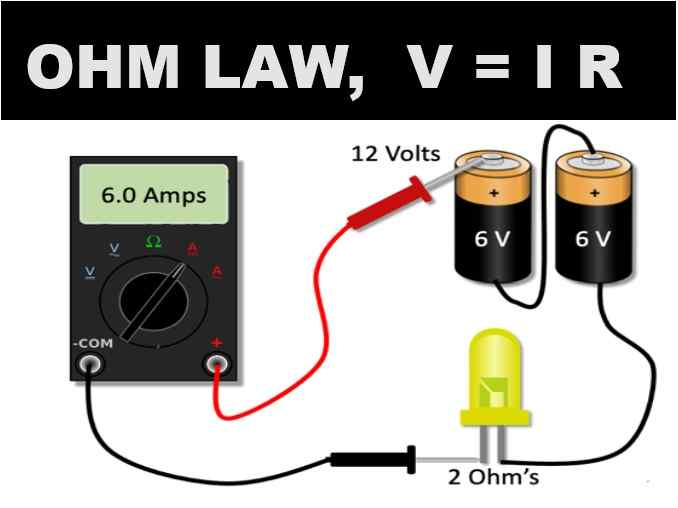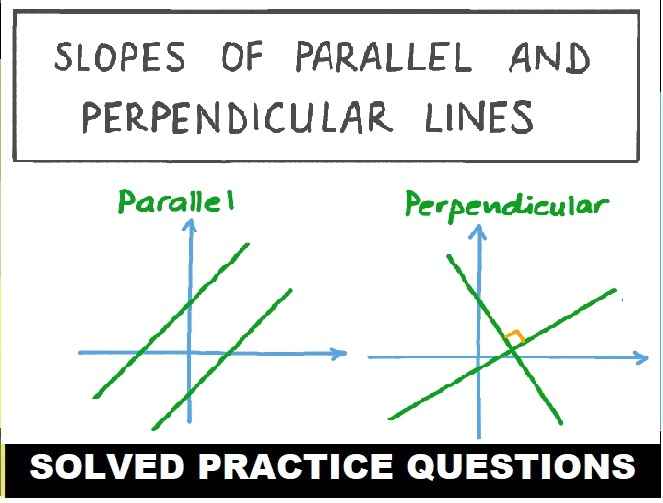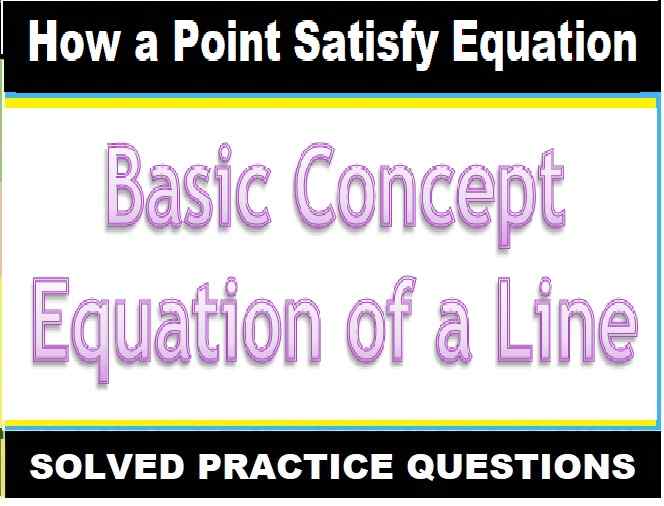MCQ Nervous System Class-10 for ICSE Biology Sem-2 Sec-A . These MCQ / Objective Type Questions is based on latest reduced syllabus according 2021-22 session on bifurcated pattern. Main motto of MCQ Type Question is cracking the next upcoming Sem-2 exam of council. Visit official website CISCE for detail information about ICSE Board Class-10 Biology.
Sem-2 Sec-A MCQ Nervous System Class-10 for ICSE Biology

| Board |
ICSE |
| Class |
10th (X) |
| Subject |
Biology |
| Chapter |
Nervous System |
| Syllabus |
on bifurcated syllabus (after reduction) |
| Session |
2021-22 |
| Bifurcated |
Sem-2 |
| Topic |
MCQ / Objective Type Question for Sec-A |
Sec-A Sem-2 ICSE Class-10 Biology MCQ Type Questions of Nervous System
1. The insulating sheath covering the axon is called
(a) Plasmalemma
(b) Neurolemma
(c) Dura mater
(d) Pia mater
Answer (b) neurolemma
2. Which one of the following pairs of brain part and its function is not correctly matched?
(a) Cerebrum – memory
(b) Cerebellum – balance of body
(c) Medulla oblongata – controls activities of internal organs
(d) Pons – consciousness
Answer (d) Pons – consciousness
3. A mixed nerve is one which
(a) Carries sensation from 2 or more different sense organs
(b) Contains both sensory and motor fibres
(c) Has a common root but branches into two or more nerves to different organs
(d) Has two or more roots from different parts of brain
Answer (b) Contains both sensory and motor fibres
4. Reflex action is controlled by the
(a) brain
(b) spinal cord
(c) autonomic
(d) peripheral nervous system
Answer (b) spinal cord
5. Which one of the following is responsible for controlling the body temperature?
(a) Liver
(b) Lung
(c) Hypothalamus
(d) Spinal cord
Answer (c) Hypothalamus
6. Which of the following is absent in a neuron?
(a) Ribosome
(b) Centrosome
(c) Chromosome
(d) Lysosome
Answer (b) Centrosome
7. The basic structural and functional unit of brain is
(a) Nephron
(b) Nerve
(c) Spinal cord
(d) Neuron
Answer (d) Neuron
8. Which of the following are collectively called the brain stem?
(a) thalamus, hypothalamus and midbrain
(b) cerebellum, pons and medulla oblongata
(c) medulla oblongata, pons and midbrain
(d) thalamus, hypothalamus and medulla
Answer (c) medulla oblongata, pons and midbrain
9. Which one of the followings is the function of parasympathetic nervous system?
(a) Stimulates oil and sweat glands in the skin
(b) Pupil constriction
(c) Acceleration of heart beat
(d) Contraction of hair muscles
Answer (b) Pupil constriction
10. Which portion of the brain is responsible for various emotions such as pleasure, fear, and happiness?
(a) Thalamus
(b) Reticular formation
(c) Hypothalamus
(d) Limbic system
Answer (d) Limbic system
11. At a neuromuscular junction, synaptic vesicles discharge ______.
(a) Acetylcholine
(b) Epinephrine
(c) Adrenaline
(d) None of these
Answer (a) Acetylcholine
12. Breathing, heart rate, and blood pressure are controlled by
(a) medulla oblongata
(b) cerebellum
(c) pons
(d) hindbrain
Answer (a) medulla oblongata
13. Which of the following is the main thinking part of the human brain?
(a) Hind-brain
(b) Cerebrum
(c) Mid-brain
(d) None of the above
Answer (b) Cerebrum
14. Dendrites and Axon are parts of which cell?
(a) Red blood cell
(b) Neuron
(c) Nephron
(d) White blood cell
Answer (b) Neuron
15. Centre for heat, touch, cold and pressure are in
(a) Frontal lobe
(b) Occipital lobe
(c) Parietal lobe
(d) Frontal as well as occipital lobe both
Answer (c) Parietal lobe
16. Blind spot in human eye can be located at the
(a) Left end of Ciliary muscles
(b) Junction of the optic nerve and the retina
(c) Centre of eye Lens
(d) Both ends of Cornea
Answer (b) Junction of the optic nerve and the retina
17. One of the functions of the Neuroglial cells is to protect and support _________
(a) Nephrons
(b) Myoid cells
(c) Neurons
(d) None of the above
Answer (c) Neurons
18. The abundant inhibitory neurotransmitter found in the CNS is ________
(a) Gamma-glutamyltransferase
(b) Gamma-linolenic acid
(c) Gamma-Aminobutyric acid
None of the above
Answer (c) Gamma-Aminobutyric acid
19. There are ____ laminae present in the spinal cord’s grey matter
(a) 2
(b) J4
(c) 6
(d) 10
Answer (d) 10
20. The thalamus and the hypothalamus are located in the _________
(a) Brain stem
(b) Cerebrum
(c) Cerebellum
(d) Diencephalon
Answer (d) Diencephalon
21. One of the actions of the parasympathetic nervous system is
(a) Inhibits peristalsis
(b) Constriction of Pupils
(c) Dilates Bronchioles
(d) Sweat secretion
Answer (b) Constriction of Pupils
22. There are ______ pairs of cranial nerves arising from the brain.
(a) 8
(b) 12
(c) 18
(d) 25
Answer (b) 12
23. The function of vagus nerve innervating the heart is to
(a) Initiate the heart beat
(b) Reduce the heart beat
(c) Accelerate the heart beat
(d) Maintain constant heart beat
Answer (b) Reduce the heart beat
24. Which of the following nerves is the largest of all the cranial nerves?
(a) Abducens nerve
(b) Oculomotor nerve
(c) Olfactory nerve
(d) Trigeminal nerve
Answer (d) Trigeminal nerve
25. Which neuroglia cells produce a fatty insulating material called myelin?
(a) Satellite cells
(b) Schwann cells
(c) Both (A) and (B)
(d) Neither (A) nor (B)
Answer (b) Schwann cells
26. Reflexes such as vomiting, coughing, sneezing, etc. are controlled by
(a) spinal cord
(b) midbrain
(c) medulla oblongata
(d) cerebellum
Answer (c) medulla oblongata
27. Intermediate neurons are found within the
(a) Central Nervous System (CNS)
(b) Peripheral Nervous System (PNS)
(c) Superior Nervous System (SNS)
(d) Inferior Nervous System (INS)
Answer (a) Central Nervous System (CNS)
28. Which of the following coordinates muscle movements?
(a) cerebrum
(b) cerebral cortex
(c) cerebral hemisphere
(d) cerebellum
Answer (d) cerebellum
29. Which one of the following organs will not feel any pain on being pricked by a needle?
(a) Skin
(b) Brain
(c) Heart
(d) Eye
Answer (b) Brain
30. The gap in the myelin sheath between adjacent Schwann cells is called ____
(a) Soma
(b) Dendrite
(c) Node of Ranvier
(d) None of these
Answer (c) Node of Ranvier
31. Synaptic vesicles discharge _________ at the neuromuscular junction.
(a) Acetylcholine
(b) Adrenaline
(c) Estradiol
(d) Testosterone
Answer (a) Acetylcholine
32. The area on the left hemisphere related to speech is
(a) Amygdala
(b) Broca’s Area
(c) Occipital lobe
(d) None of the above
Answer (b) Broca’s Area
33. When cocaine is used as a stimulant, it interferes with the CNS at the reuptake of the _____ at the synapses
(a) Testosterone
(b) Dopamine
(c) Adrenaline
(d) None of the above
Answer (a) Testosterone
34. Smooth muscles, cardiac muscles and organs are regulated by _______
(a) Central nervous system
(b) Parasympathetic nervous system
(c) Sympathetic nervous system
(d) Autonomic system
Answer (d) Autonomic system
35. Which layer is in contact with brain tissues?
(a) Piamater
(b) Arachnoid
(c) Duramater
(d) Piamater and Arachnoid
Answer (a) Piamater
36. Which part of the brain controls the heart?
(a) Spinal Cord
(a) Medulla Oblongata
(a) Neuron
(a) None of these
Answer (a) Medulla Oblongata
37. Which of the following is NOT correct for cerebellum?
(a) It lies in the posterior region of the brain
(b) It controls movements, speech, sight, smell, taste, hearing, intelligence etc.
(c) It is a part of hind brain
(d) It maintains equilibrium of the body
Answer (b) It controls movements, speech, sight, smell, taste, hearing, intelligence etc.
38. The cerebellum is concerned with ________.
(a) Remembering and hunger
(b) Coordination of muscular movement
(c) All involuntary actions
(d) Thinking
Answer (b) Coordination of muscular movement
39. Which of the following receptors are responsible for smell and taste?



